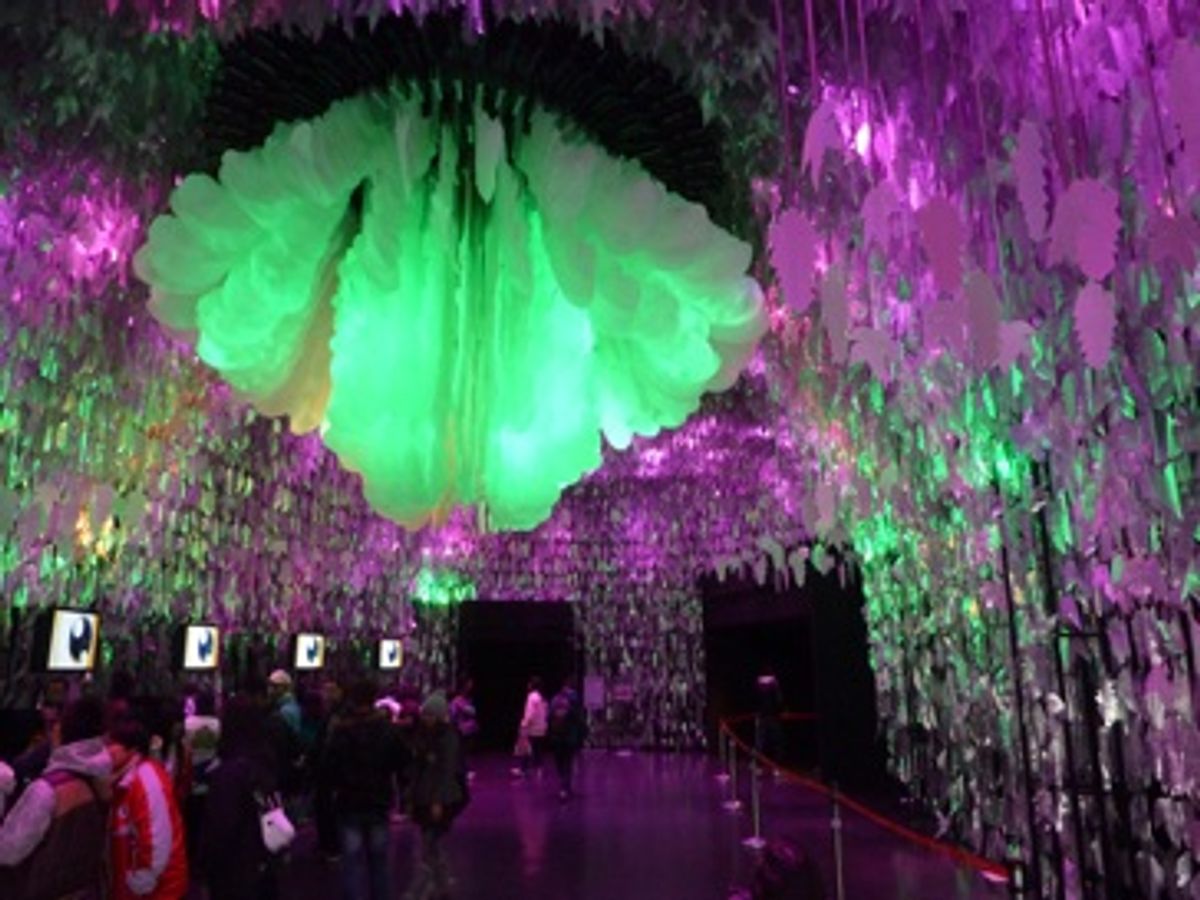This Pavilion of Dreams is billed as an interactive showcase of advanced technology themed around the life cycles of flowers and butterflies. Mainly created by technologists from Taiwan’s
To me, the story line seemed a little hokey—visitors first pick a category of dreams, like family or career, and make a wish in that category while standing in front of what seems a lot like a vending machine with some 3-D bells and whistles. The machine assigns a personal flower to you, displays it in a video image, and releases an RFID bracelet. The bracelet identifies your flower and category of dreams, and, as you move through the exhibit, your personal flower sometimes appears in front of you; your presence also triggers trees growing and other effects. The walk through the exhibit takes about an hour; the experience ends when you toss your virtual flower into a virtual river to send it flowing off to carry your wishes into some magical place.
And ITRI's flexible display technology powers rows of curved displays that show dreamlike images of fields and flowers (photo, below right). This is FlexUPD, a breakthrough technology introduced last year that sol
Also making an appearance at the Flower Expo—glasses-free 3D displays (photo, below left). Big ones, not the little handheld gizmos now coming onto the market. Going glasses-free on a large scale is tricky, because the sweet spot, that is, where you have to stand to see the 3D effect at its best, is small and can be hard to find (handheld displays assume a standard distance from eyes to hands, and you naturally make adjustments in how you hold it if something is a little off). But, in the Pavilion of Dreams, this isn’t much of a
This version of glasses free technology is a twist on the typical lenticular lens approach, in which the two images for the right and left eyes interlace horizontally and a rippled sheet of plastic on the surface of the display sends the different views in the right directions. ITRI’s lenticular displays interlace the images vertically, necessary because the flowers and trees being displayed are typically vertical images.
The Pavilion of Dreams also incorporated a wireless sensing technology that purportedly detected breathing patterns and pulse rates. I couldn’t tell whether or not this worked or not; it was integrated into the exhibit in a section where visitors were instructed to stand in front of a display and breathe calmly because somehow their breathing would cause the image of a seedling to grow into a beautiful tree. The crowd followed instructions and all the virtual trees grew at basically the same pace, proving, I guess, that all of the visitors, at least, were alive and not virtual.
Tekla S. Perry is a senior editor at IEEE Spectrum. Based in Palo Alto, Calif., she's been covering the people, companies, and technology that make Silicon Valley a special place for more than 40 years. An IEEE member, she holds a bachelor's degree in journalism from Michigan State University.








